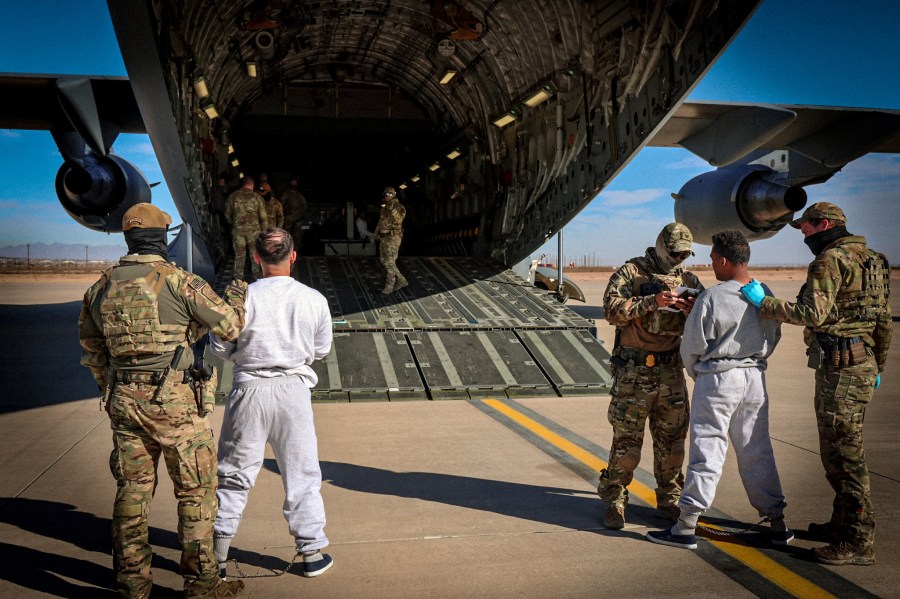On Tuesday, White House press secretary Karoline Leavitt said the Trump administration had sent 10 immigrants to Guántanamo Bay, Cuba, for detention — an unprecedented move. And just the beginning.
On Jan. 29, President Donald Trump signed a 128-word memo calling for a 30,000-bed immigrant detention facility to be built at Guantánamo Bay for “high-priority criminal aliens unlawfully present in the United States.” The memo set in motion a project that, if fully realized, will be a financial disaster while posing a grave threat to immigrants and citizens alike, potentially for decades to come.
The memo set in motion a project that, if fully realized, will be a financial disaster while posing a grave threat to immigrants and citizens alike.
Transporting tens of thousands of people from the U.S. mainland and detaining them at Guantánamo makes no sense financially. The U.S. government will need to construct a massive site for detention — along with medical facilities, food and sanitation services, staffing and security on a remote island with limited, aging infrastructure — with a likely, albeit as yet unknown, cost of hundreds of millions of dollars.
Defense officials were reportedly shocked by Trump’s order. The island’s existing Migrant Operations Center was designed for people picked up in boats by the Coast Guard — not tens of thousands of longtime U.S. residents, including children. NBC News is reporting that already tent camps are being built to house some of these new detainees, while there are also plans to detain immigrants at the high-security prison built after 9/11.
This expensive project will continue to drain American coffers for years, even decades, especially if Guantánamo becomes a detention site for people who have been ordered deported but whose home countries do not accept deportations.

While the operational feasibility of Trump’s plan is dubious, history suggests that such a move could enable the government to commit human rights abuses and inflict serious neglect on people detained there, far from lawyers, the media and congressional oversight. Unfortunately, that could also be the point.
Our government held hundreds of men without charge at Guantánamo after the Sept. 11, 2001, attacks, and made it a notorious site of torture and cruelty, falsely claiming that international and U.S. law did not apply to people with terrorism allegations. Perhaps less well-known is that Guantánamo also has a sordid history of quasi-hidden migrant detention. In the 1990s, the Coast Guard intercepted at sea tens of thousands of people from Haiti and Cuba fleeing violence and human rights violations.
More than 45,000 people were taken to Guantánamo and held in tent camps plagued by inhumane conditions. Thousands of Haitian nationals were returned to Haiti despite having credible fears of persecution, forcing parents to leave their children behind at Guantánamo.












